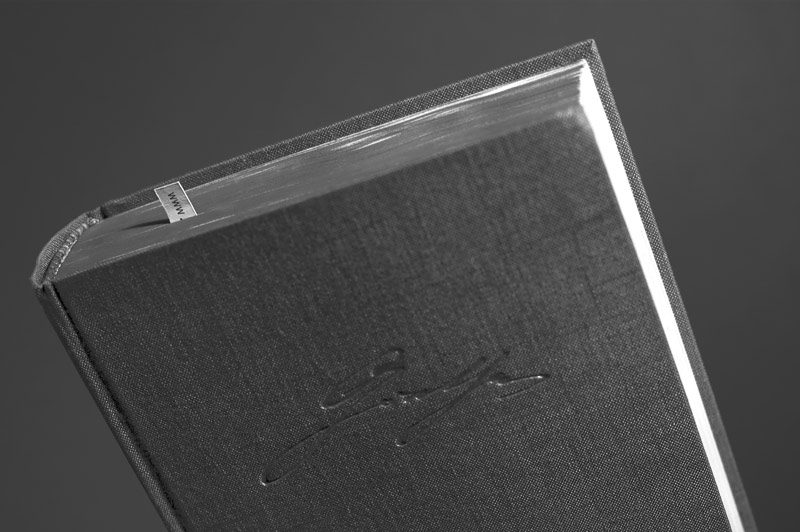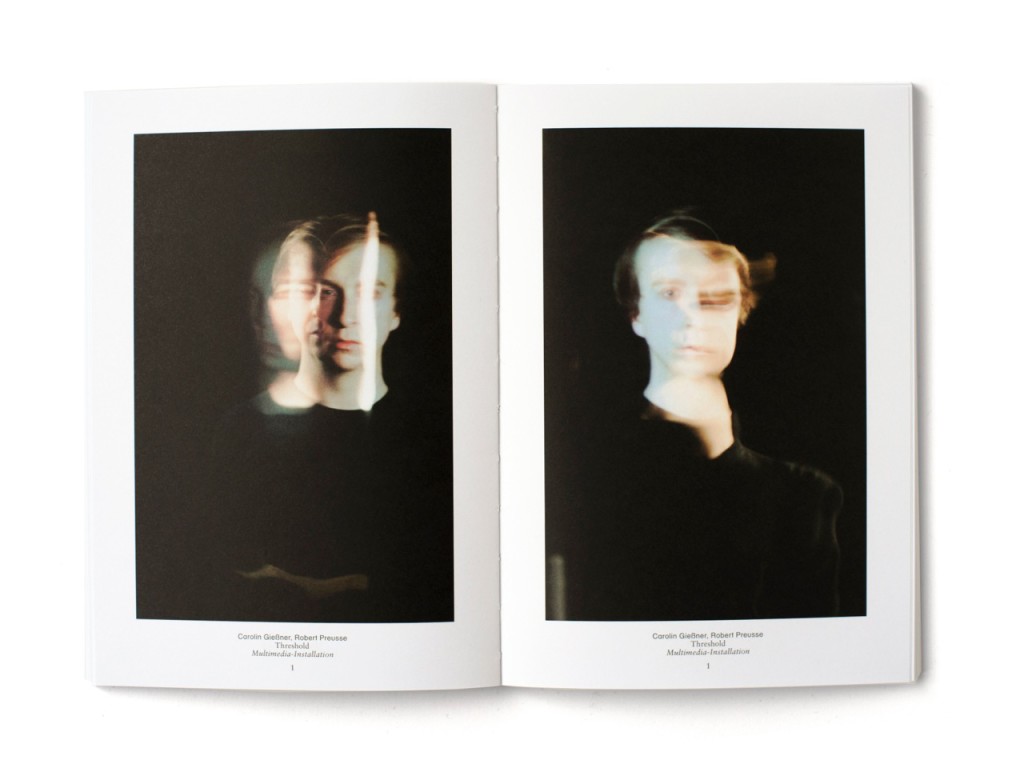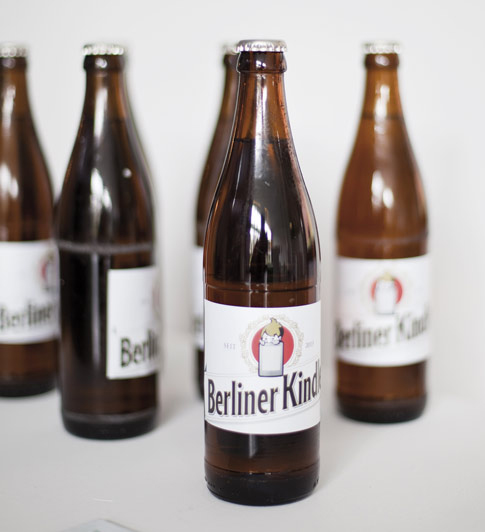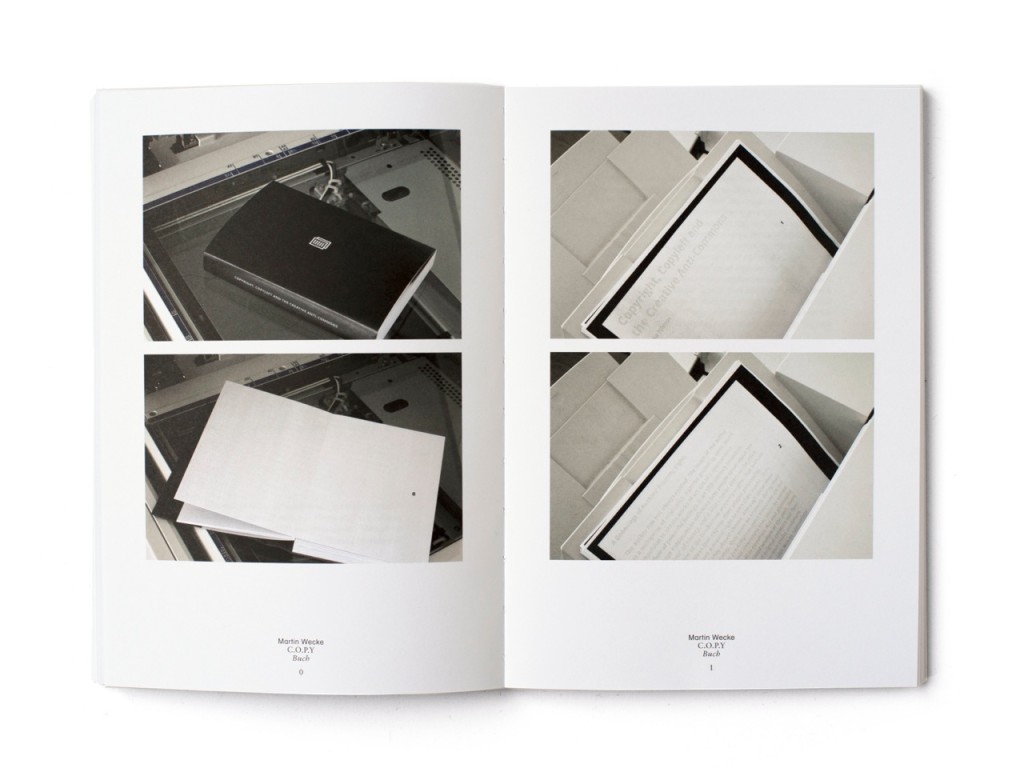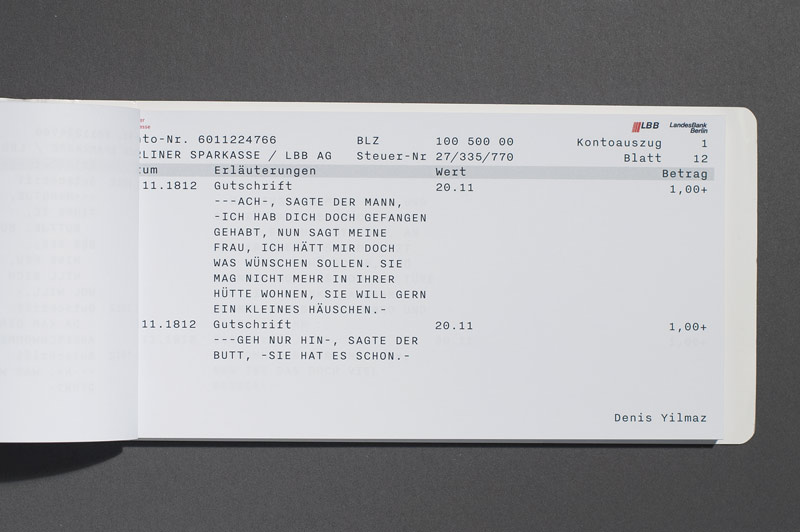Title |
War postdigital besser? – Interview with Martin Conrads and Franziska Morlok |
Author |
|
Date |
Recently published by Revolver, War postdigital besser? was edited and designed by writer and artist Martin Conrads and graphic designer Franziska Morlok. The book includes texts by Verena Kuni, Jan Distelmeyer, Manuel Bürger, Clemens Jahn, Nina Franz and a conversation among Danny Aldred, Kristoffer Gansing and Siegfried Zielinski. As a result of a seminar held at the Berlin University of the Arts, it documents the outcomes of the students confronted with the notion of “post-digital”. I was particularly curious about the educational directions and outputs of such attempt so I asked the editors a few questions.
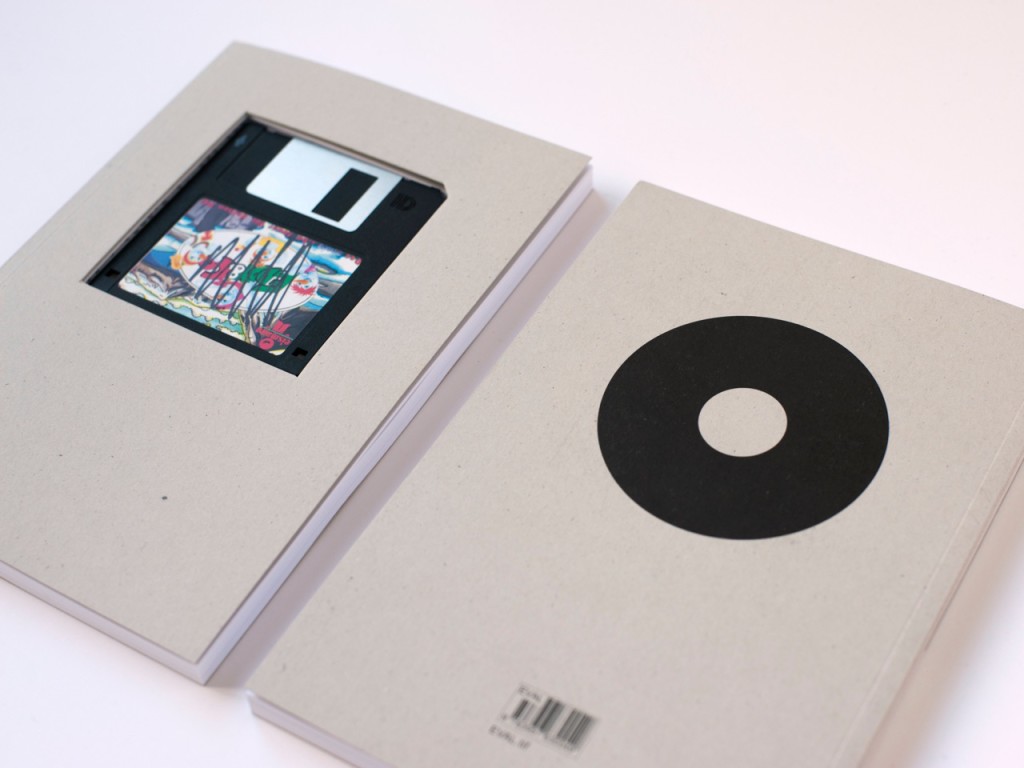
Silvio Lorusso: The book originates from “Postdigital ist besser” (Post-digital is Better), a seminar held at the Berlin University of the Arts (UDK) between 2012 and 2013. Why did you choose the “post-digital” label? Can you briefly explain your take on it?
Martin Conrads and Franziska Morlok: It was Alessandro Ludovico’s book Post-Digital Print (2012) which for us triggered the idea of it being a good reading tool for our seminar. This was why, the moment the book was published / put online, we instantly started to conceive the seminar and looked for a title to relate the topic. The title we chose for the seminar, “Postdigital ist besser“, is a variation of German rock act “Tocotronic“’s first album from 1995, whose title “Digital ist besser“ (“Digital is better”) was supposedly meant to be an ironic remark about the 1990s ultimate belief in digital media in the first place then.
By choosing this title we aimed to mark an ironic crack in a possible “belief” in post-digital media. With the title of our book, War postdigital besser? (Was Post-Digital Better?), we aimed to even speculate more on the validity of the “post-digital” concept: by posing this single question to the contributors of the book we asked them to look back on post-digital times (from a perspective which either would claim that we already live beyond post-digital times or from a possible future perspective which would look back on our post-digital present). By using this method we hoped to get some approaches especially towards the significance of the prefix “post-“ in “post-digital”.
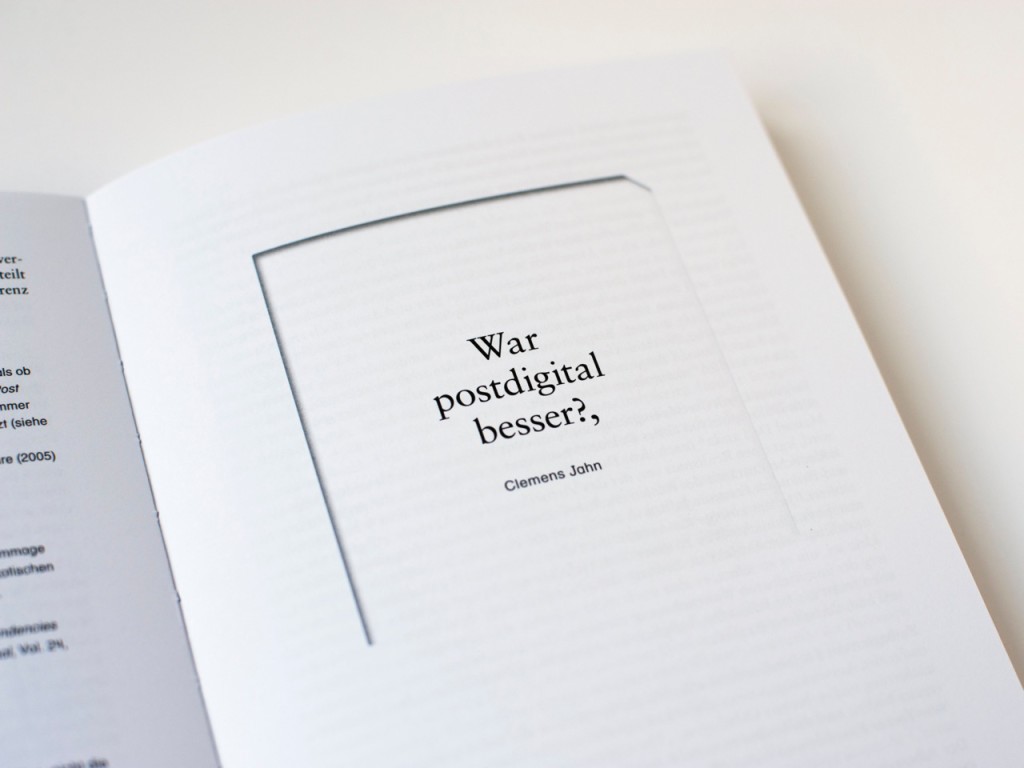
SL: What were the students’ first reactions? Was the post-digital approach ‘natural’ to them? Was there any resistance?
MC, FM: The “post-digital” topic was already around in students’ works in and before 2012, although, since the term was not much in use until then in our own academic environment, it needed more (historical, analytical) context to become fruitful from a graphic design perspective.
The post-digital approach didn’t seem to be odd to the students while at the same time it took some time to get into the topic. In general, the students’ attitude towards the topic was very much varying. We can’t recall any resistance. The overall atmosphere was a climate of curiosity and openness for the topic.
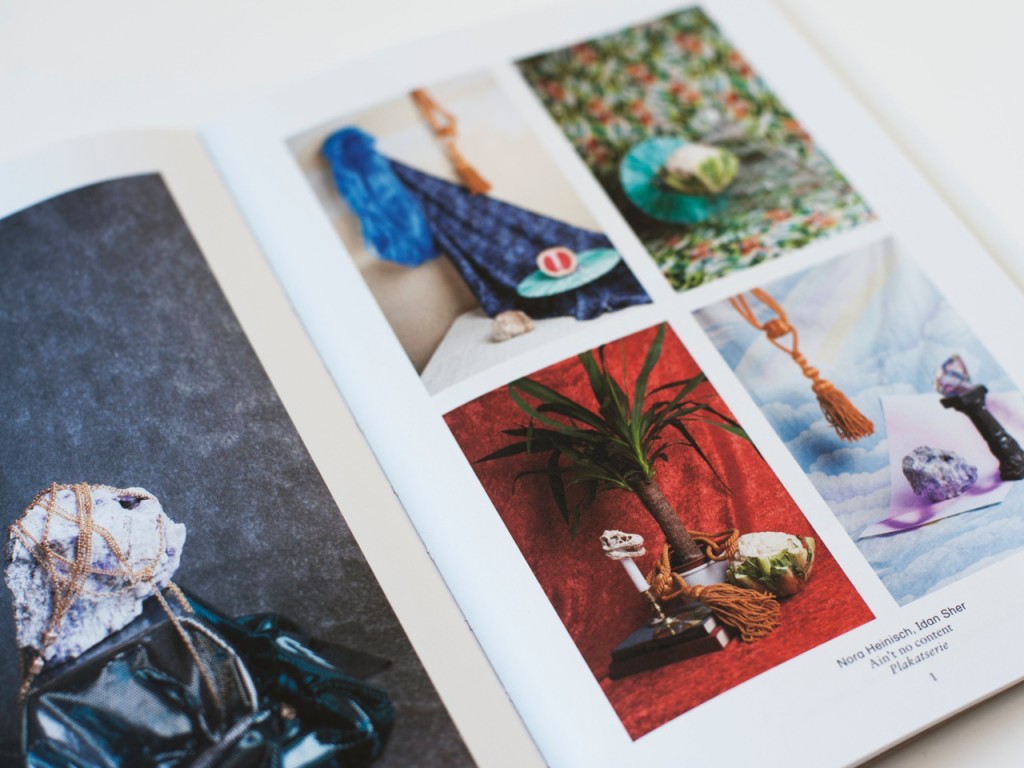
SL: What were the difficulties that you encountered in having to teach such a complex, ambiguous topic? Which texts, projects and inspirations did you introduce to the students?
MC, FM: Teaching within an academic environment which very much focuses on communication design, in the beginning there were a lot of discussions about how to combine the post-digital topic with a “genuine” graphic design / communication design approach. In order to combine a “media thinking” approach with a “designerly way of thinking”” which had been our aim, the seminar comprised a close reading of Alessandro Ludovico’s book Post-Digital Print, accompanied by the presentation of students’ papers relating to texts by Marshall McLuhan, Jorge Luis Borges, El Lissitzky, László Moholy-Nagy, Beatrice Warde, Dmitri Siegel, Jessica Helfland, Jeremy Leslie, Florian Brody, Craig Mod, Lev Manovich, Vilém Flusser, Kim Cascone, Sara de Bondt / Bob Stein, Siegfried Zielinski, Félix Guattari etc.
We also watched some movies, like Fahrenheit 451, Citizen Kane, How to Make a Book with Steidl, or Last Year at Marienbad and made a visit to the Berlin based Archiv der Jugendkulturen (Archive of Youth Cultures), where we flipped through some of the over 20.000 zines archived there. As a starting point for the first session of the seminar we asked the students to bring a “post-digital object” each from home to bring up a number of possible definitions for the term “post-digital”.
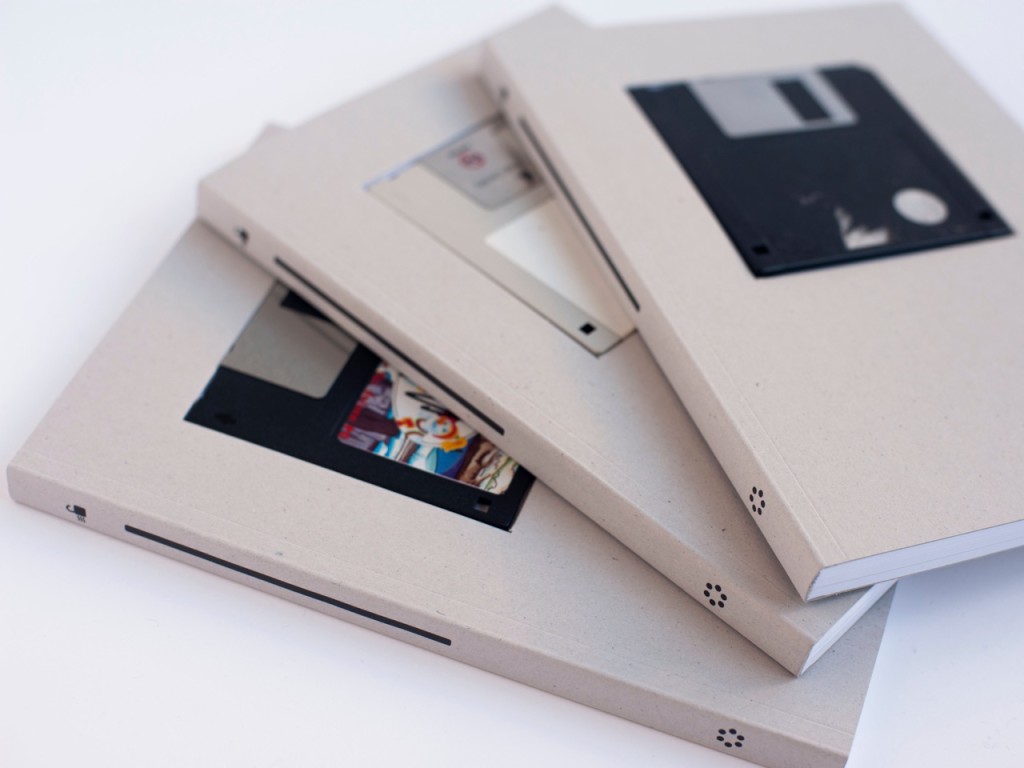
SL: Let’s talk about the publication: by using a different floppy disc in each copy’s cover, the design of the book seems to respond to the need for customisation fostered by online platforms. At the same time, the floppy, deprived of its original function, acts as a reminder of rapid obsolescence. What can you say about this choice?
MC, FM: The use of the floppies provides some possible interpretations: we collected the floppies on flea markets, from friends and from people we don´t know (eBay etc.) – we didn’t know what could be found on them. It could be something really interesting (some of the labels point into that direction) and / or possibly something “dangerous” or dull. We found that also the design value of floppies is totally underrated. Some of the labels are really interesting in terms of illustration and typography (which make them a very welcome part of a cover design). Also the use of the floppies left its marks on them.
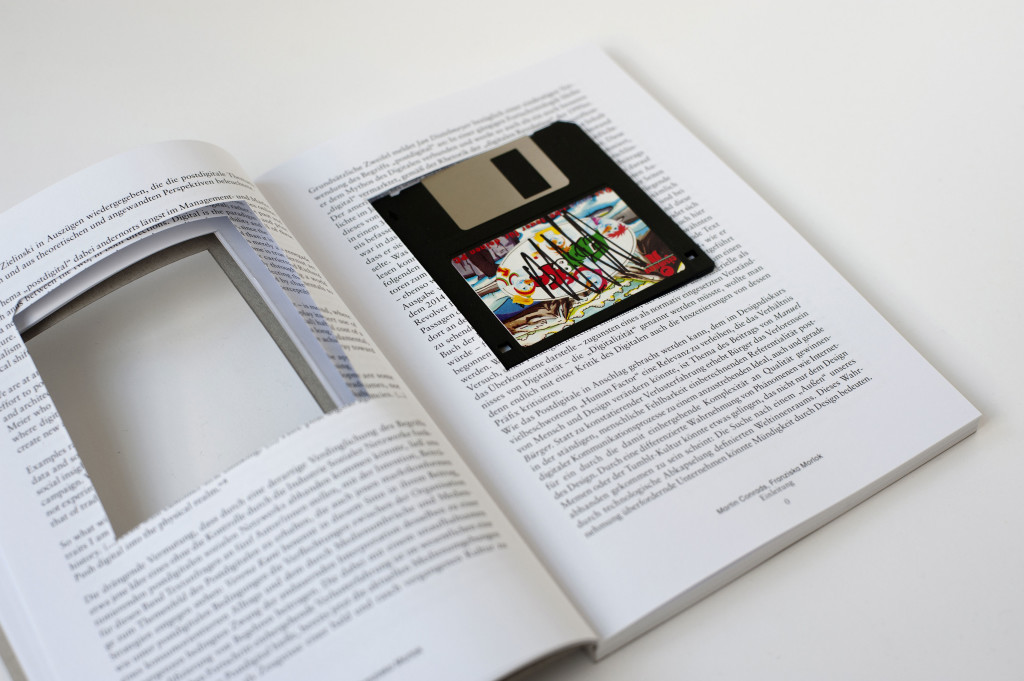
The floppy is also cutting through the first 16 pages of the book (our foreword, which nevertheless is still readable), which also poses the question if the book is deprived of its original function (the readability) as well. This makes it a “competition” between two media concepts: does the digital medium eat out the paper medium or does the paper medium encapsulate the digital medium? (Is this some higher form of “e-paper”?). The combination of both, a typical “analog” medium (the book) and a typical “digital” medium (a floppy disk) under post-digital conditions somehow produces a shift: the historically younger floppy disk medium seems to become the older medium, the book the (re)new(ed) medium.
It also should be mentioned that the part of the foreword which actually seems to be missing from the book exists elsewhere: we made the missing part our contribution to a recent issue of the Berlin based magazine Ästhetik & Kommunikation, which was conceived around the topic “As if”. Still, what you expect as the missing part there proves to be an autonomous text which reflects on its absence in the book, which for us is a nod in the direction of the “network” as Ludovico (and Florian Cramer) is writing about it in his book. You can only get the full content of the book if you also buy a copy of that magazine’s issue, yet there is no congruency.
SL: Your design made me think of the Lost Formats Society by the Experimental Jetset (2000). The Dutch collective was inspired by “the way content is shaped by formats, and formats are shaped by content.” This is an issue that often emerges in your book, even in literal ways like in the project ReFlow by Martin Wecke. Do you think this fascination may produce a genuine hands-on, DIY approach to technology?
MC, FM: Yes.
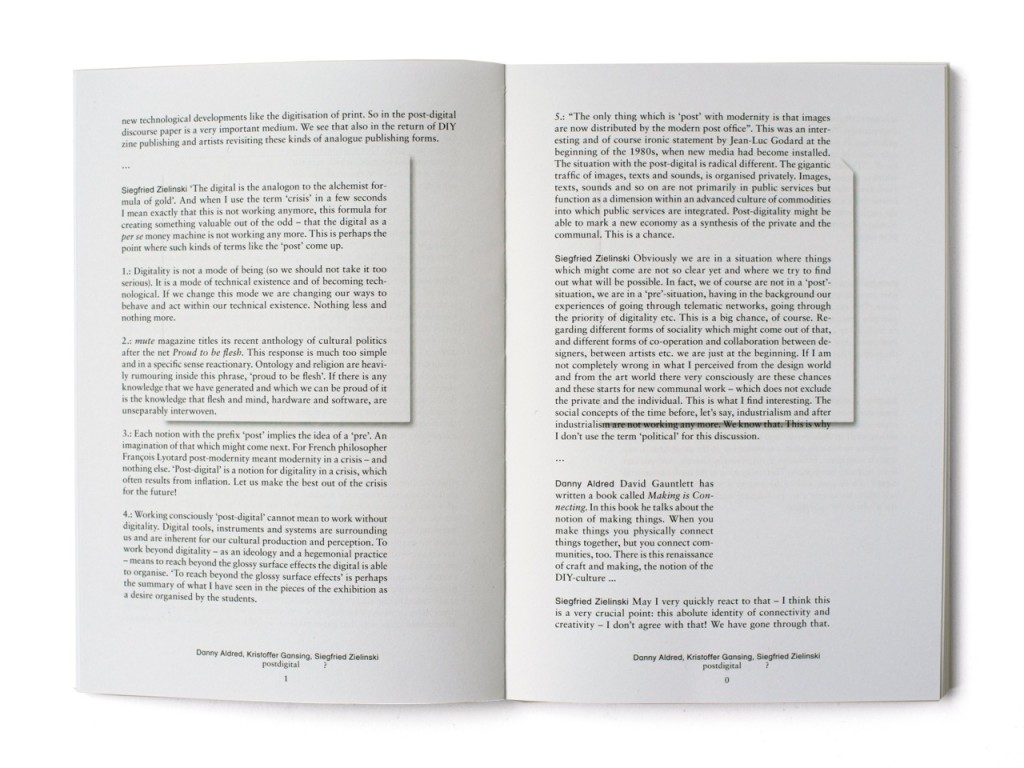
SL: If the works – to quote Siegfried Zielenski’s contribution to the book – “reach beyond the glossy effects the digital is able to organise”, which methodologies can help such an intent?
MC, FM: DIY, criticality, defetishising, hybridity, delinearising, dehierarchising.
SL: Several works included in the book play with dichotomies still very present in the discourse around publishing, such as old/new, physical/digital, offline/online. Those are exemplified by Ana Halina Ringleb’s Ein Lesebuch für unsere Zeit, a memento of the internet that employs the book as a mere physical souvenir. While some projects try to subvert the way those dualisms are generally intended, do you think there the risk to reinforce them?
MC, FM: We don’t see the dichotomies you mentioned so much at play in the students’ works. Take Ana Halina Ringleb’s Ein Lesebuch für unsere Zeit: For us it’s actually not so much the dichotomy between analogue and digital media which defines this work, but more the question what it means in terms of book design if a formerly readable medium becomes a decorative object with the sole aim to refer to another medium. Will post-digital book design be more an agenda of graphic designers or of product designers? But even this dualism might vanish soon.
SL: Browsing the works, sometimes I perceived a reactionary stance toward digitality. Why do you think the so-called “digital natives” would focus more on the limits of networked systems rather than their potential?
MC, FM: We believe that a number of students would be very critical towards the assumption that members of a younger generation automatically can be called “digital natives”. This might explain why there is a critical stance towards the concept of digitality, which we wouldn’t call “reactionary” but rather “sceptical”. How much potential is there in networked systems after Snowden and (on the other hand) how much potential is there in making a book after digitality?
SL: The commercial exploitation of nostalgia, addressed in the book by Kristoffer Gansing, becomes itself an inspiration for some projects like Donnie O’Sullivan’s Berliner Kindle: an ironic reworking of the well-known Berliner Kindl’s beer brand. Can you foresee a “brandification” of post-digital itself?
MC, FM: “Post-digital” already is a marketing term or – perhaps better – a marketing tool. Just take the magazine postdigital which is published by a campaign management agency, or the NEXT Berlin conference from 2012. As we write in the foreword to our book, the choice of our contributors resulted in our claim to actually define positions which would be able to confront marketing-friendly reifications of “post-digital” notions. As a result of this reification, the notion of a possible post-digital hybrid media network which would function without being controlled by the social media industry might get lost.
SL: One of my favourite pieces is Martin Wecke’s C.O.P.Y, a physical volume whose text, Copyright, Copyleft and the Creative Anti-Commons by Anna Nimus, appears only when it’s photocopied. In this case the artwork produces a “mode of publishing” rather than a fixed artifact. Are there other projects that function in a similar way?
MC, FM: Denis Yilmaz’ work Ein Märchen in Auszügen (A folk tale in statement) also produces a mode of publishing. It, next to other things, poses the question, how a banking institution can serve as a publishing house. Here is some English information about the work.
SL: How would you articulate the role of the designer in the current publishing ecosystem? According to you, what kind of skills and set of knowledge should be provided by university programs?
MC, FM: The role of the graphic designer is getting more and more diverse. University programs should react to this with a broader and more conceptual approach on education. Most students already have a lot of technical skills when they start studying, but they don´t know so much about concepts, ideas or the speculative potential of graphic design. What is often missing is a design historical approach combined with a ‘media thinking‘ approach which would put the history of graphic design in the context of ‘media thinking‘. On a very practical level this would also mean not to close down university-run workshops which are associated with allegedly dying or dead media (wood print workshops, silk screen workshops, computer pools etc.) and at the same time to store and archive seemingly outdated technology (computer systems, typewriter systems, optical media etc.) for a later use by designers, artists and scientists.
SL: How do you intend to proceed the research?
MC, FM: Our common teaching concept at UdK Berlin consists in working with a different topic in each semester. Still, the topics often are not only related regarding their level of conceptuality but they also question the current state of graphic design from a perspective which includes a critical as well as a media theoretical approach.
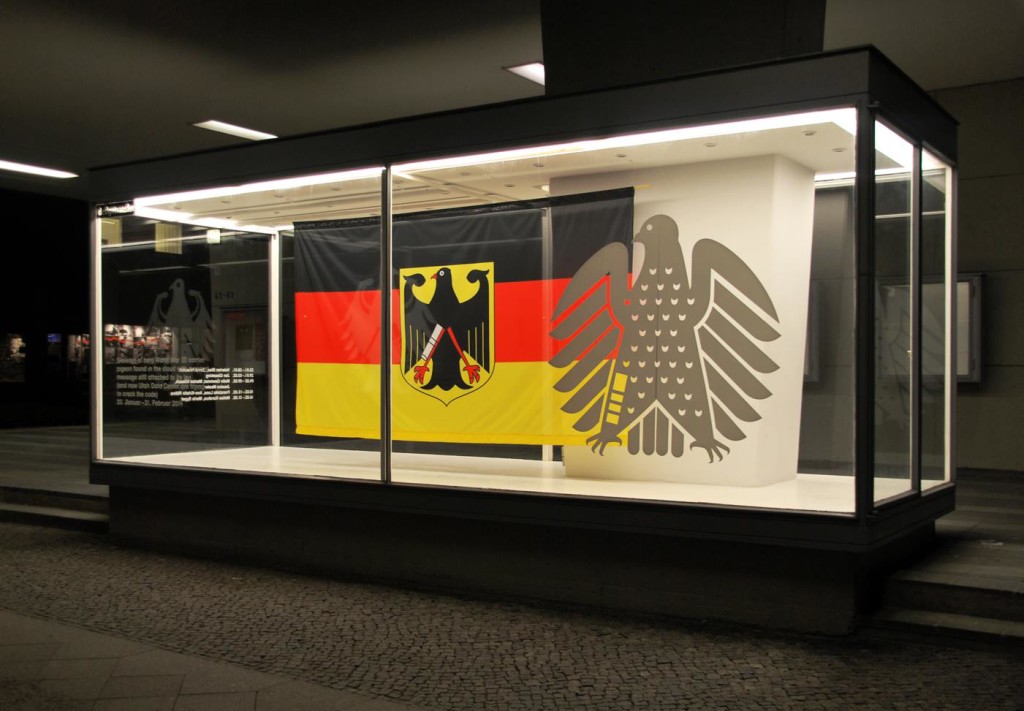
Federal Pigeon by Franziska Loos and Ann-Kristin Röhrs at Skeleton of hero World War III carrier pigeon found in the cloud with a secret message still attached to its leg (and now Utah Data Center are trying to crack the code) exhibition, designtransfer, Berlin (2014).
For instance, in the winter semester of 2013/14 we reflected on the means there are for graphic design to visualize networked communication in the post-Snowden era. The project was called “Skeleton of hero World War III carrier pigeon found in the cloud with a secret message still attached to its leg (and now Utah Data Center are trying to crack the code)” and took the following thoughts as a premise: “Ever since the NSA affair started the web is full of ironic remarks about the return of the carrier pigeon as a tap-proof, animal-based network technology. In short, as a meme, the carrier pigeon is to PRISM what the cat is to the World Wide Web. In the winter semester of 2013/14 a group of Visual Communication students at the Berlin University of the Arts researched from a design perspective about the carrier pigeon‘s image as part of the military-industrial complex, resulting in designing a virtual dovecote in the showcase outside the UdK building at Einsteinufer. During the duration of the exhibition several versions of the dovecote were installed.”
SL: “War postdigital besser?”
MC, FM: Actually there is digitally encoded answer to this in the book.

